Luis Miranda-Moreno
Modular Conversational Agents for Surveys and Interviews
Dec 22, 2024



Abstract:Surveys and interviews (structured, semi-structured, or unstructured) are widely used for collecting insights on emerging or hypothetical scenarios. Traditional human-led methods often face challenges related to cost, scalability, and consistency. Recently, various domains have begun to explore the use of conversational agents (chatbots) powered by large language models (LLMs). However, as public investments and policies on infrastructure and services often involve substantial public stakes and environmental risks, there is a need for a rigorous, transparent, privacy-preserving, and cost-efficient development framework tailored for such major decision-making processes. This paper addresses this gap by introducing a modular approach and its resultant parameterized process for designing conversational agents. We detail the system architecture, integrating engineered prompts, specialized knowledge bases, and customizable, goal-oriented conversational logic in the proposed approach. We demonstrate the adaptability, generalizability, and efficacy of our modular approach through three empirical studies: (1) travel preference surveys, highlighting multimodal (voice, text, and image generation) capabilities; (2) public opinion elicitation on a newly constructed, novel infrastructure project, showcasing question customization and multilingual (English and French) capabilities; and (3) transportation expert consultation about future transportation systems, highlighting real-time, clarification request capabilities for open-ended questions, resilience in handling erratic inputs, and efficient transcript post-processing. The results show the effectiveness of this modular approach and how it addresses key ethical, privacy, security, and token consumption concerns, setting the stage for the next-generation surveys and interviews.
Adversarial Vulnerabilities in Large Language Models for Time Series Forecasting
Dec 11, 2024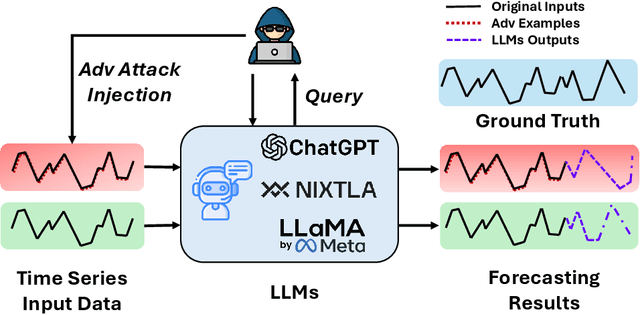
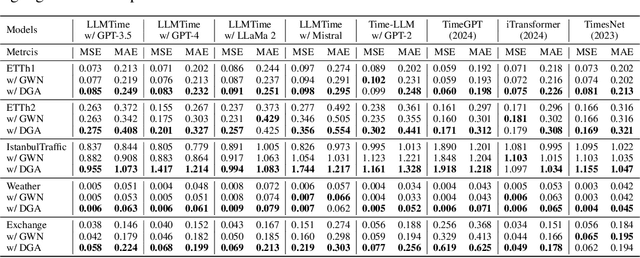
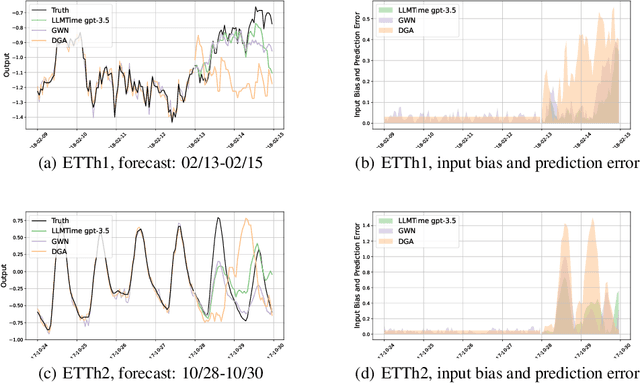

Abstract:Large Language Models (LLMs) have recently demonstrated significant potential in the field of time series forecasting, offering impressive capabilities in handling complex temporal data. However, their robustness and reliability in real-world applications remain under-explored, particularly concerning their susceptibility to adversarial attacks. In this paper, we introduce a targeted adversarial attack framework for LLM-based time series forecasting. By employing both gradient-free and black-box optimization methods, we generate minimal yet highly effective perturbations that significantly degrade the forecasting accuracy across multiple datasets and LLM architectures. Our experiments, which include models like TimeGPT and LLM-Time with GPT-3.5, GPT-4, LLaMa, and Mistral, show that adversarial attacks lead to much more severe performance degradation than random noise, and demonstrate the broad effectiveness of our attacks across different LLMs. The results underscore the critical vulnerabilities of LLMs in time series forecasting, highlighting the need for robust defense mechanisms to ensure their reliable deployment in practical applications.
Hankel-structured Tensor Robust PCA for Multivariate Traffic Time Series Anomaly Detection
Oct 08, 2021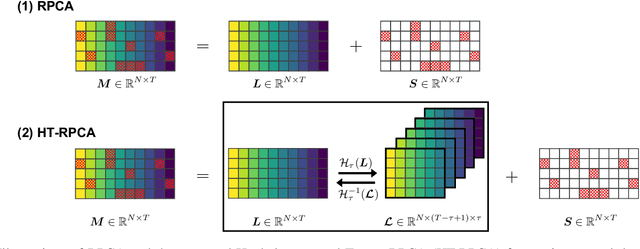
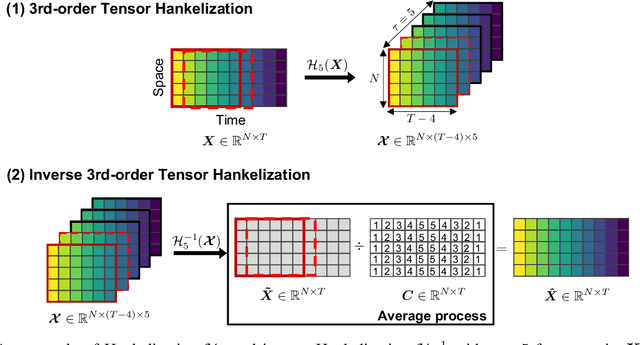
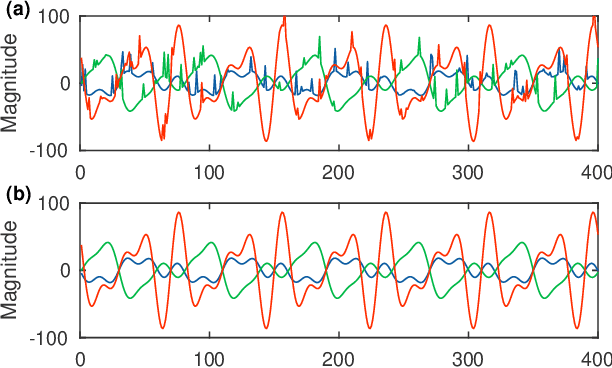
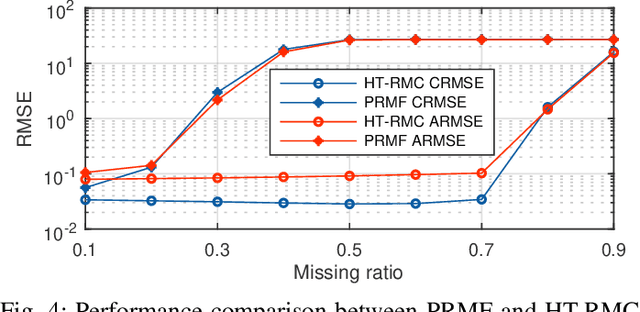
Abstract:Spatiotemporal traffic data (e.g., link speed/flow) collected from sensor networks can be organized as multivariate time series with additional spatial attributes. A crucial task in analyzing such data is to identify and detect anomalous observations and events from the data with complex spatial and temporal dependencies. Robust Principal Component Analysis (RPCA) is a widely used tool for anomaly detection. However, the traditional RPCA purely relies on the global low-rank assumption while ignoring the local temporal correlations. In light of this, this study proposes a Hankel-structured tensor version of RPCA for anomaly detection in spatiotemporal data. We treat the raw data with anomalies as a multivariate time series matrix (location $\times$ time) and assume the denoised matrix has a low-rank structure. Then we transform the low-rank matrix to a third-order tensor by applying temporal Hankelization. In the end, we decompose the corrupted matrix into a low-rank Hankel tensor and a sparse matrix. With the Hankelization operation, the model can simultaneously capture the global and local spatiotemporal correlations and exhibit more robust performance. We formulate the problem as an optimization problem and use tensor nuclear norm (TNN) to approximate the tensor rank and $l_1$ norm to approximate the sparsity. We develop an efficient solution algorithm based on the Alternating Direction Method of Multipliers (ADMM). Despite having three hyper-parameters, the model is easy to set in practice. We evaluate the proposed method by synthetic data and metro passenger flow time series and the results demonstrate the accuracy of anomaly detection.
Spatially Focused Attack against Spatiotemporal Graph Neural Networks
Sep 10, 2021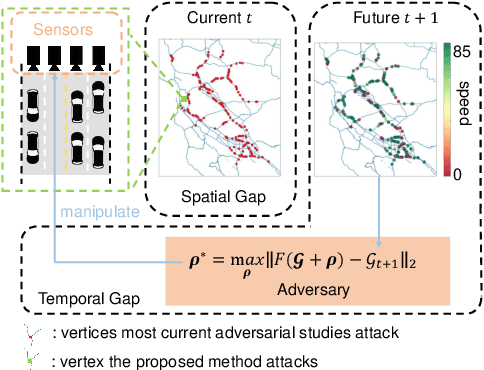

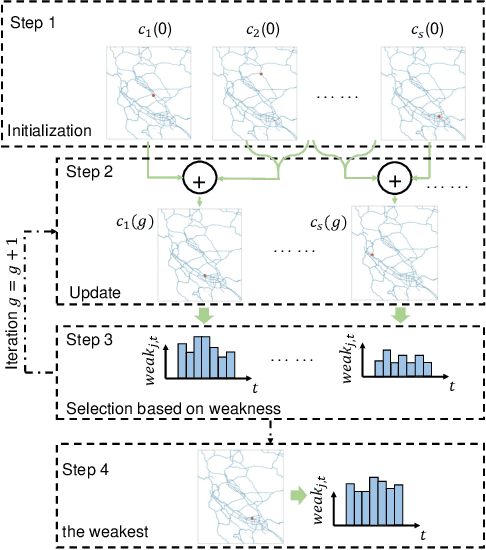

Abstract:Spatiotemporal forecasting plays an essential role in various applications in intelligent transportation systems (ITS), such as route planning, navigation, and traffic control and management. Deep Spatiotemporal graph neural networks (GNNs), which capture both spatial and temporal patterns, have achieved great success in traffic forecasting applications. Understanding how GNNs-based forecasting work and the vulnerability and robustness of these models becomes critical to real-world applications. For example, if spatiotemporal GNNs are vulnerable in real-world traffic prediction applications, a hacker can easily manipulate the results and cause serious traffic congestion and even a city-scale breakdown. However, despite that recent studies have demonstrated that deep neural networks (DNNs) are vulnerable to carefully designed perturbations in multiple domains like objection classification and graph representation, current adversarial works cannot be directly applied to spatiotemporal forecasting due to the causal nature and spatiotemporal mechanisms in forecasting models. To fill this gap, in this paper we design Spatially Focused Attack (SFA) to break spatiotemporal GNNs by attacking a single vertex. To achieve this, we first propose the inverse estimation to address the causality issue; then, we apply genetic algorithms with a universal attack method as the evaluation function to locate the weakest vertex; finally, perturbations are generated by solving an inverse estimation-based optimization problem. We conduct experiments on real-world traffic data and our results show that perturbations in one vertex designed by SA can be diffused into a large part of the graph.
 Add to Chrome
Add to Chrome Add to Firefox
Add to Firefox Add to Edge
Add to Edge